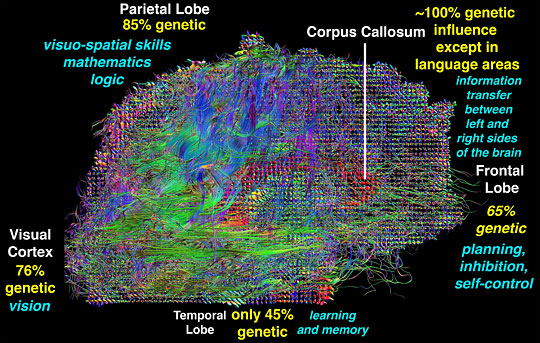 "The brain is details on top of details on top of details." — Michael Hawrylycz
"The brain is details on top of details on top of details." — Michael HawrylyczPhoto: David Clugston
From Wired Magazine:
The human brain is surprisingly bloody. I've worked in neuroscience labs, and I'm used to seeing brains that are stored in glass jars filled with formaldehyde, the preserved tissue a lifeless gray. But this brain—removed from a warm body just a few hours ago—looks bruised, its folds stained purple. Blood drips from the severed stem, forming puddles on the stainless steel table.
I'm in the dissection room of the Allen Institute for Brain Science in Seattle, and the scientist next to me is in a hurry: His specimen—this fragile cortex—is falling apart. Dying, the gray matter turns acidic and begins to eat away at itself; nucleic acids unravel, cell membranes dissolve. He takes a thin, sterilized knife and slices into the tissue with disconcerting ease. I'm reminded of Jell-O and guillotines and the meat counter at the supermarket. He saws repeatedly until the brain is reduced to a series of thin slabs, which are then photographed and rushed to a freezer. All that remains is a pool of blood, like the scene of a crime.
Read more ....


















